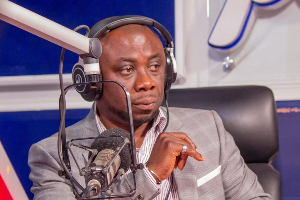By: Prof Lungu
"...According to GRIDCO, the annual cost of fuel alone for thermal power plants in Ghana is about $1,140 billion. In 5.5 years...fuel alone would require $6,270 billion... Now, only 1,500 megawatt (MW) or 51 per cent of the country’s 2,936 MW installed capacity of power is currently available...due to government’s inability to purchase light cycle crude oil to power the thermal plants...So... how is it that Nkrumah's Ghana...cannot prioritize $345 million (5.5% of fuel expenditure during 5.5 years) for a 325MW Solar Power facility...with a useful life no less than 25 years that would pay off in 12.5 years and add almost 25% to current available power....all fuel free. The facility could help stabilize industrial/commercial/emergency power requirements...and add to the socio-economic-gain baskets, if we still care...", (Prof Lungu, 26 Oct 15).
We understand that on Monday, 26 October, Mr. John Dramani Mahama, President of Ghana, left Accra for New Delhi, India, to attend the 3rd India-Africa Summit, hosted by the Government of India. Our last essay in this series discussed the major strides India is making in the area of Solar Power. In addition, we mentioned we would follow it up with a discussion of some aspects of Ghana's policy on Solar Power.
Again, our reference point is the speech in 1964 during which Dr. Kwame Nkrumah of blessed memory asked Ghanaians to begin prioritizing solar energy research.
It is still serious business for us!
Unlike Ghana, India is not wasting time arranging shiny imported chairs or pushing pedestrian arguments about "clean coal", as Dr. Kwabena Donkor, Power Minister would want us to know.
No, unlike Ghana, India is moving strongly on the solar energy front!
While Mr. Mahama's Ghana was wasting time re-arranging walls and shiny chairs imported from China to create cubicles for a new Ministry of Power, Prime Minister Modi's India created a Ministry of New and Renewable Energy (MNRE) to focus Indian national policy, politics, and community, on the lofty goal to install 100 Gigawatt (100,000 MW) of solar power capacity in India by 2022.
But, within practically the same period, Ghana, already at a power deficit more that 545MW, plans to install just about 125MW of solar power by 2020. (Currently, according to the new Ministry of Power, Ghana now has just about 7.2MW of solar power capacity, and a few solar lamps for some isolated communities).
In other words, sustainable solutions for Dum-Sor in Ghana is not an option, nor a pressing alternative, as far as the government of Mr. Mahama is concerned.
And so, we foresee India swiftly creating new-economy-jobs for its citizens and beginning to arrest some of the effects of climate change through that aggressive renewable energy policy, and in the process, showing Kwame Nkrumah's Ghana what prioritizing for industrial development means today, 51 years after Kwame Nkrumah's gave the speech on Solar Power.
As we reported the last time, according to GRIDCO, the annual cost of fuel alone for thermal power plants in Ghana is about $1,140 billion. In 5.5 years, assuming prices remain stable, fuel alone would require $6,270 billion. Just 4 months ago, PEACEFM Online reported that only:
"...1,500 megawatt (MW) or 51 per cent of the country’s 2,936 MW installed capacity of power is currently available.... The reason is mainly due to government’s inability to purchase light cycle crude oil to power the thermal plants..."
So, the question is, how is it that Nkrumah's Ghana, after so much borrowing, cannot prioritize $345 million (5.5% of fuel expenditure in 5.5 years) for a 325MW Solar Power facility? This would be a facility with a useful life no less than 25 years that could pay off in no more than 12.5 years and add almost 25% to current available power (or nearly as much to current deficit of 1,436MW), all fuel free. The facility could help stabilize industrial/commercial/emergency power requirements, if we are interested, and add to the socio-economic-gain baskets, if we still care.
MESSAGE IN A BOTTLE FOR MR. JOHN D. MAHAMA:
For the wise and the prudent, your revised Laughing-Out-Loud (LOL), Six Pointers for Ghana:
1. Currently, $1 million ought to buy 1 MW of Solar Power, at an appropriate scale, and still remain scalable.
2. Currently, the Solar Power knowledge-base is not in any ECOWAS country. Rather it is in China, Italy, India, Germany, Spain, France, USA.
3. Currently, solar project ought to be feasible in Ghana under a tariff of USD$0.14 per kWh, even less as we head into 2020 due to declining cost of solar power components, including batteries for reserve power systems. Therefore, during 2015 and beyond, any Solar Power project in Ghana that requires a tariff of US$0.13 per kWh or more must be seriously reviewed and rejected, unless there are other non-economic reasons justifying the higher cost.
4. Currently, the goal of 10% "contribution of renewable energy (excluding hydro 100 MW or larger) in the electricity generation mix by 2020" identified in the Scaling-Up Renewable Energy Program (SREP) report is not sufficiently focused, or nearly aggressive enough, given the requirements and issues with crude oil and water for thermal plants and hydro dams, respectively.
5. Programmatically, project(s) to add 325 MW Solar Power capacity to the Ghana electrical system should take no longer that 2 years given Dum-Sor and its effects on Ghanaian national life, if treated as the emergency it is, regardless of the political calendar.
6. The sun, still is an untapped resource in Ghana since that day in 1964. Ghana still has remarkably good insolation, practically country-wide, "...about 4.4 to 5.6 kilowatts per square meter a day with a sunshine duration between 1,800 and 3,000 hours a year..."
Message in a bottle in the Indian Ocean!
Hoping you make a safe landing at the Osu Castle, by the Sea, in Kwame Nkrumah's Ghana, West Africa, Africa.
So it goes, Ghana!
SOURCES:
1. Ghana Ministry of Power. SREP Investment Plan for Ghana. April 29, 2015.
2. Special Report Africa: Ghana, PV Magazine, 20 November, 2012, (http://www.pv-magazine.com/news/details/beitrag/special-report-africa--ghana_100013506/#axzz3pjdDg2o8).
3. Power Deficit Huge, PeaceFMOnline. (http://news.peacefmonline.com/pages/news/201506/244759.php).
GhanaHero.com. WWW.GhanaHero.com.
Visit for more information.
(Read Mo! Listen Mo! See Mo! Reflect Mo!).
©Prof Lungu is Ghana-centered/Ghana-Proud.
Prof Lungu is based in Washington DC, USA.
Message in a Bottle in the Indian Ocean for Mr. John Mahama!
Brought to you courtesy www.GhanaHero.com©28 Oct 15.
Opinions of Saturday, 31 October 2015
Columnist: Lungu, Prof.


















